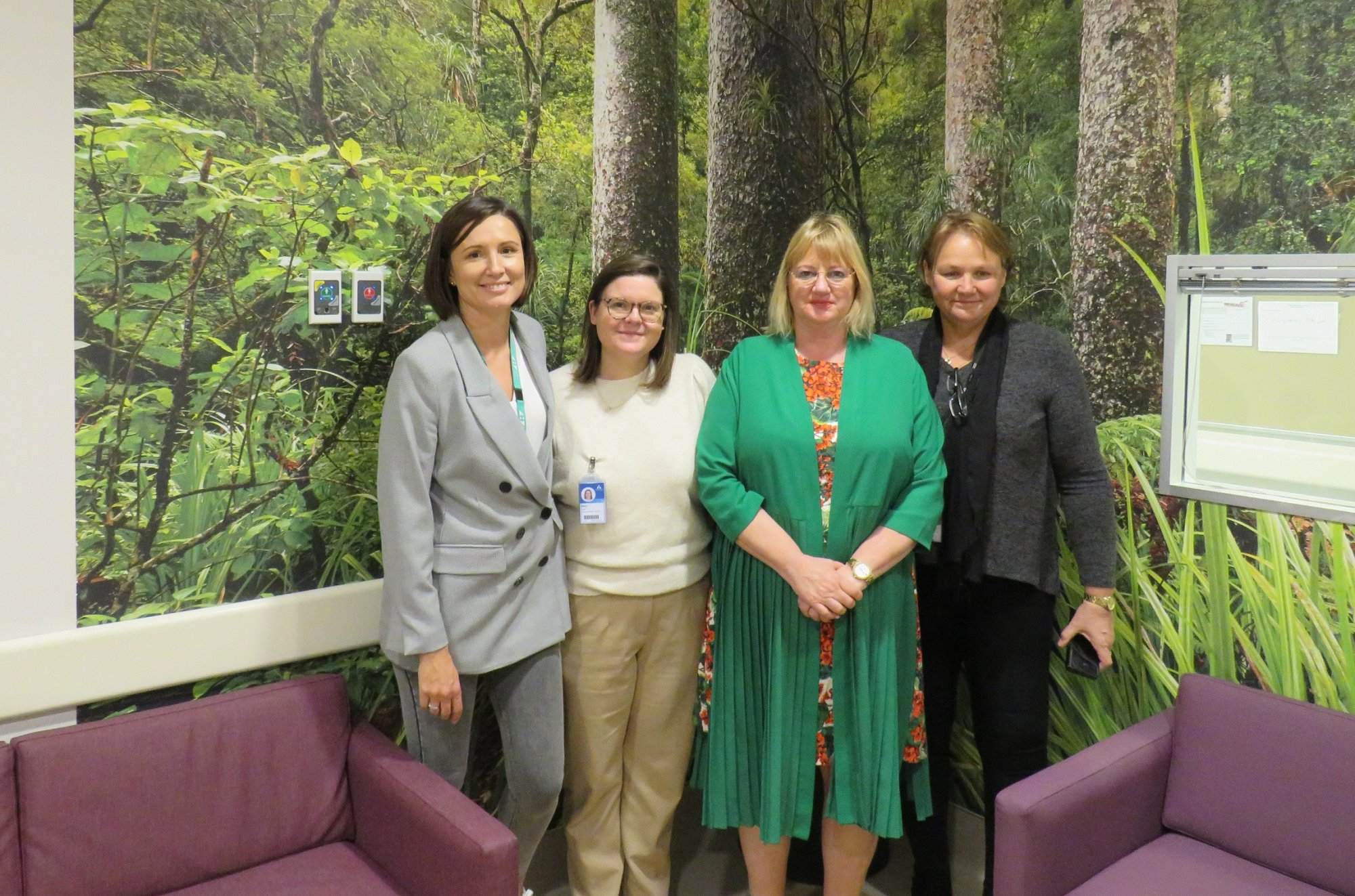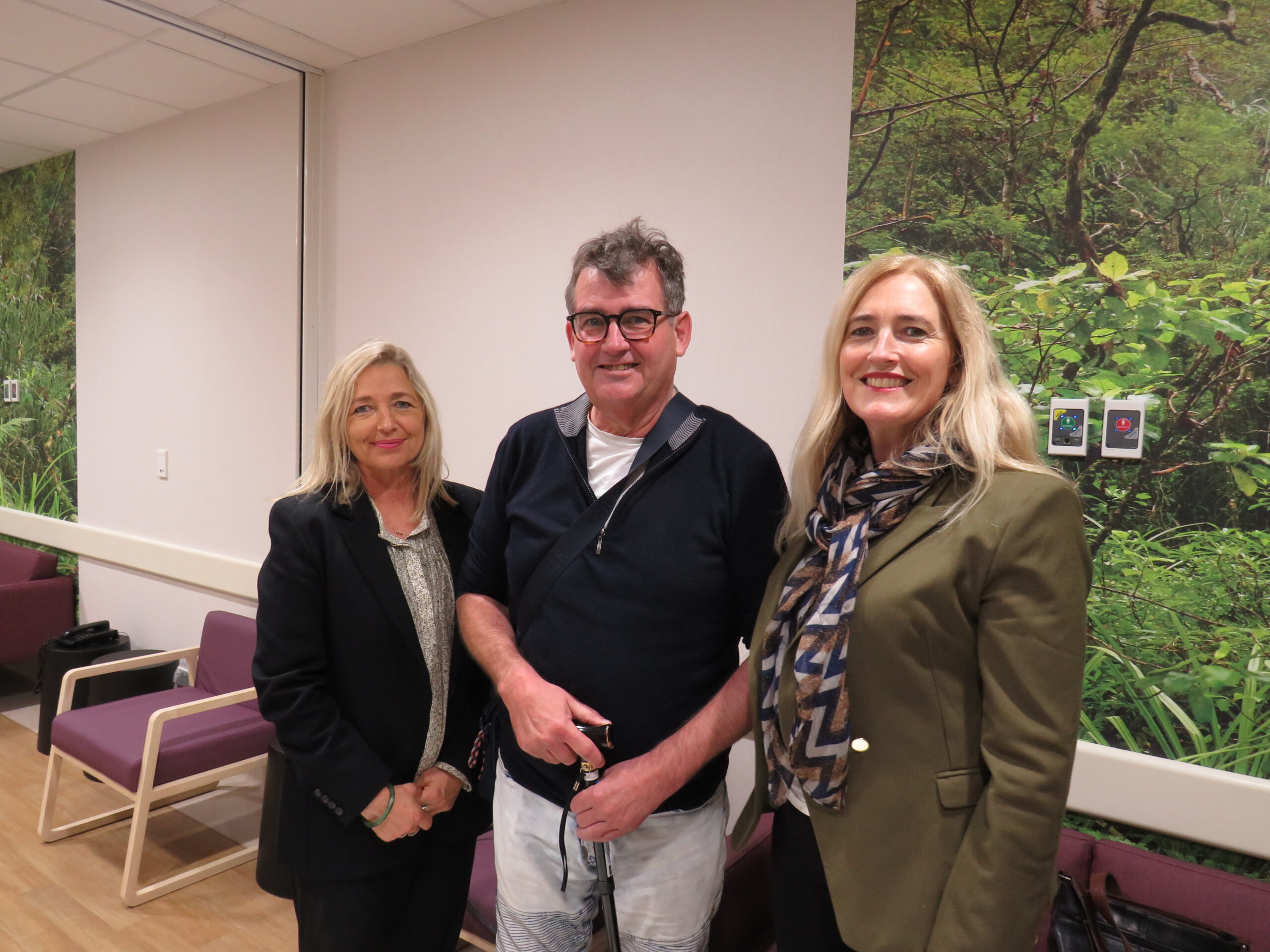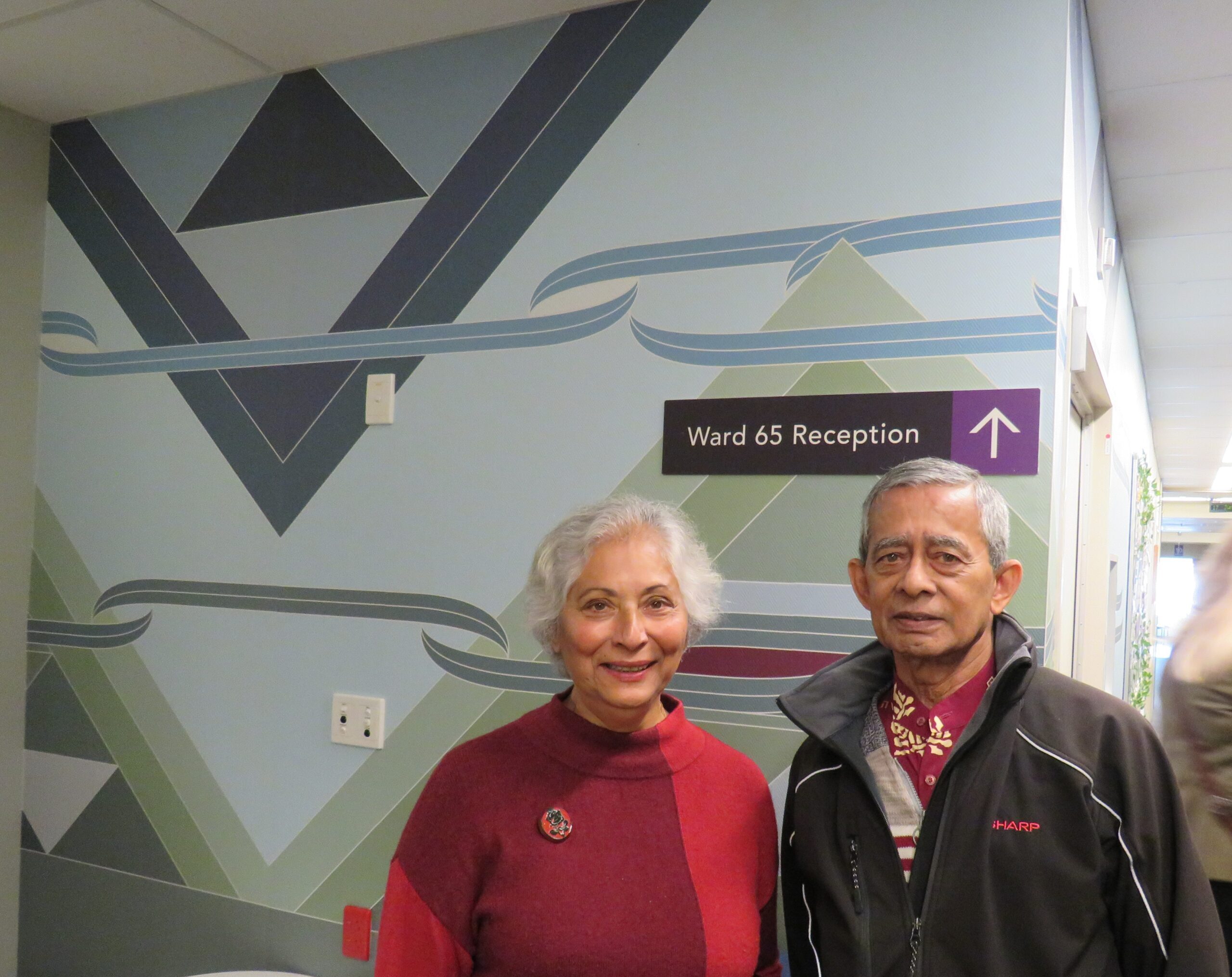In 2018, Auckland City Hospital set a goal to transform 44 whānau rooms into welcoming, calming spaces that meet the needs of all whānau and honour the Te Ao Māori origins of the spaces.
When they opened in 2003, the hospital’s whānau rooms provided spaces for family and friends to connect, be together and have a moment of respite when supporting loved ones in hospital. It was important the rooms feel inviting, homely and restorative, and accomodate whānau gathering around a palliative family member in their final precious hours together; however, this was increasingly not the case.
“The whānau rooms have been . . . well used by whānau and patients of all cultures and ethnicities. But, over time, the rooms had become rundown. They had lost their kaupapa and started to be used for other purposes.” – Theresa Gattung, whānau rooms project donor
The whānau rooms needed to return to the essence of their original purpose: a space steeped in tikanga Māori, a non-clinical space that meets cultural needs, not just for Māori but for all whānau who come through their doors. And so, the rejuvenation project to honour the kaupapa of the hospital’s 44 whānau rooms was born; initiated by Chief Nursing Officer, Margaret Dotchin, with guidance from Chief Advisor Tikanga, Dame Naida Glavish.
From the entrance mural to the special features inside, each space is the result of community collaboration and purposeful design (scroll for the mural’s story). Extensive co-design work with whānau, patients, staff, community members, designers and architects ensured the new designs reflect the needs of the community.
“As the first hospital in the world to have dedicated te ao Māori whānau spaces, we are proud to bring them back to a condition that honours that heritage.” – Emma Wylie, Co-design and Design Operations Lead, Ara Manawa, Auckland City Hospital
The whānau rooms rejuvenation project sat outside the scope of government funding, which meant the refurbishments relied on the generosity of people who shared the belief that whānau rooms should be improved.
Leading NZ businesswoman, entrepeneur and philanthropist Theresa Gattung said: “When Auckland City Hospital spoke to me about the state of the Ward 96/98 (Women’s Health) whānau rooms, I knew we needed to act.”
Theresa Gattung funded the refurbishment of a Women’s Health whānau room; the busy team loves the new space in the maternity ward, which caters to around 7,000 births every year.
Co-Charge Midwife Rebecca Clark said: “It is a relaxing, comfortable and welcoming space for everyone to utilise. The space allows whānau to come together and celebrate their new pēpi and also gives new and expecting parents a space to socialise and meet other parents.”


The largest donation to the whānau rooms project came from a former patient, Desmond Schollum, who was grateful for the hospital care he received before he passed away.
Desmond gifted $896,000 to the hospital in his will. Previous donations had allowed for seven whānau rooms to be refurbished, but the goal was always to raise the full $1.2M to complete all 44 rooms, and Desmond’s extraordinary gift truly helped make the whānau rooms vision a reality.
“The impact of Desmond’s gift will be ongoing and very helpful to other families, and it is comforting to know he is supporting family-centred care and involvement for patients.” – Desmond’s relative, Dr Farnsworth-Grodd
Fundraising for the whānau rooms project and bringing 44 spaces to life (see a refurbishment time-lapse here) was challenging amid the global pandemic, but it didn’t stop the project’s success.
The whānau, patients and staff who used the whānau rooms were central to identifying the problems, understanding people’s experiences, and creating the vision to work towards.
Stroke survivor and subsequent supporter, Paul Harvey, funded the Rangitoto Ward whānau room rejuvenation after spending four weeks in Auckland City Hospital in 2018.
Paul said: “My family didn’t use the whānau room; it wasn’t welcoming or comfortable. The refurbished spaces I’ve seen will make a big difference for families like mine and hopefully encourage people to visit their loved ones often.”

A key feature of each whānau room is the paatu maioha – its entrance mural.
The artwork has two purposes; to help patients and whānau find their way, and to signal that whānau rooms are a place they can come to for comfort.

The whānau rooms entrance mural (left, alongside whānau rooms project donors) illustrates that the space honours te ao Māori, welcomes whānau of any ethnicity, and is for non-clinical purposes; all of which were intentions held by Ngāti Whātua when they gifted the land the hospital sits upon.
The bespoke artwork was designed by Matekitātahi Rāwiri-McDonald from TOA Architects, who was inspired by the story of Te Ara a Tāne-Te-Waiora, or Pathway of Tāne te Waiora.
It reflects the pathway of Māori Atua Tāne to wellbeing, amid the soothing properties of nature. It also talks to the embrace of Papatūānuku (Earth Mother) and the healing wai-āriki (sacred fresh water) provided by Ranginui (Sky Father) to the earth below.
While the artist has represented a beautiful story of the healing properties of nature, wairua and whānau in the work, he also hopes that people will form their own meaning.
The mural’s bottom section shows Rarohenga, a place that doesn’t have disease or illness. This is where creativity comes from, for example Tāniko, a lattice weaving craft that is reflected by triangles.
The lower haehae (horizontal lines) are a whakarare pattern that symbolise Papatūānuku, and the purple oval inside symbolises humanity.
Further up is Te Ao Mārama, the world of enlightenment that living things inhabit. The triangular shapes on the sides refer to whare whakairo (carved meeting house) and ancestors.
The top third reflects Ranginui. The horizontal designs are like tīwhana (curved lines on the forehead), and the two ovals are metaphors for water with its healing properties.
Ehara taku toa i te toa takitahi, engari kē he toa takitini
My success should not be bestowed onto me alone, it was not individual success but the success of a collective

Pictured (from top):
- Tāmaki Ward whānau room – before & after refurbishment
- (L-R) Auckland Hospital Foundation Director Candy Schroder, Co-Charge Midwife Rebecca Clark, Theresa Gattung and Director of Midwifery Deborah Pittam inside the refurbished Women’s Health whānau room funded by Theresa
- Desmond Schollum (right) with his parents Joseph and Frances
- Paul Harvey (centre), with his supporters (L-R) Angie and Kirsten, inside the refurbished Women’s Health whānau room
- Whānau room project donors outside the refurbished Ward 63 whānau room
- Entrance mural artwork telling the story of ‘Te Ara a Tane Te Waiora’ – a healing pathway that all patients and whānau walk through when entering the room
You can help our hospital
help you.
Let’s go beyond what government funding can provide, to enhance the care and health of patients at Auckland City Hospital.
